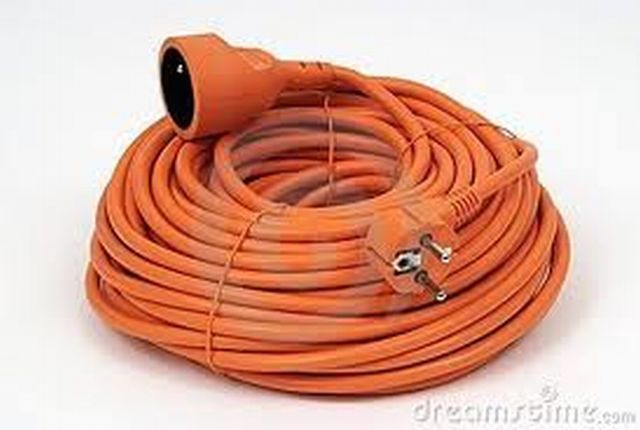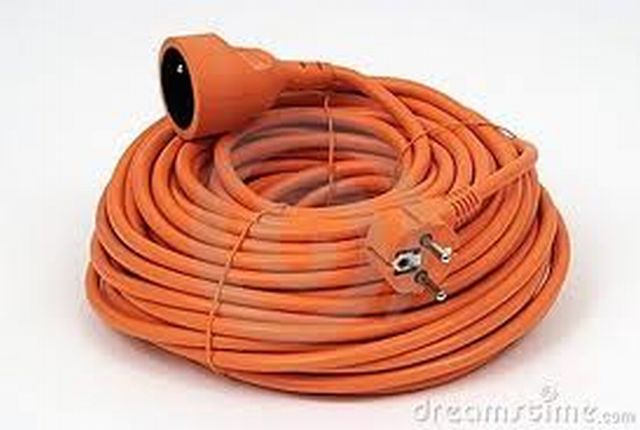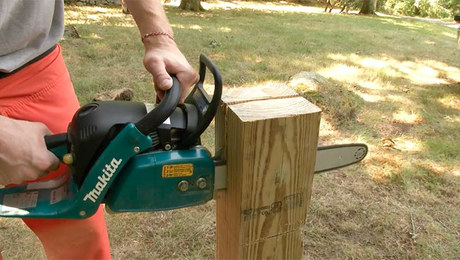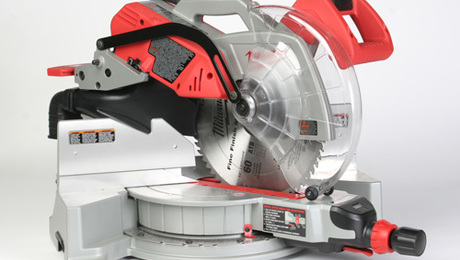
When you lay out your extension cord, lay it all the way out. When you get ready to recoil it always go back to the plug end and coil it from there. It will recoil easily.

Coiling your cord easily

When you lay out your extension cord, lay it all the way out. When you get ready to recoil it always go back to the plug end and coil it from there. It will recoil easily.
Sign up for eletters today and get the latest how-to from Fine Homebuilding, plus special offers.

Coiling your cord easily
Get home building tips, offers, and expert advice in your inbox




Join some of the most experienced and recognized building professionals for two days of presentations, panel discussions, networking, and more.

"I have learned so much thanks to the searchable articles on the FHB website. I can confidently say that I expect to be a life-long subscriber." - M.K.
Get home building tips, offers, and expert advice in your inbox

Dig into cutting-edge approaches and decades of proven solutions with total access to our experts and tradespeople.
Start Free Trial Now
Get instant access to the latest developments in green building, research, and reports from the field.
Start Free Trial Now
Dig into cutting-edge approaches and decades of proven solutions with total access to our experts and tradespeople.
Start Free Trial NowGet instant access to the latest developments in green building, research, and reports from the field.
Start Free Trial Now© 2025 Active Interest Media. All rights reserved.
Fine Homebuilding receives a commission for items purchased through links on this site, including Amazon Associates and other affiliate advertising programs.
Get home building tips, offers, and expert advice in your inbox
Become a member and get instant access to thousands of videos, how-tos, tool reviews, and design features.
Start Your Free TrialGet complete site access to expert advice, how-to videos, Code Check, and more, plus the print magazine.
Already a member? Log in
We use cookies, pixels, script and other tracking technologies to analyze and improve our service, to improve and personalize content, and for advertising to you. We also share information about your use of our site with third-party social media, advertising and analytics partners. You can view our Privacy Policy here and our Terms of Use here.
View Comments
The photo is confusing. Which end are you calling "the plug" ... the end with the male connecting prongs? And, why does this make it easy to coil?
Yeah, and what country is that cord from? I do not agree with this at all. The reason a lot of extension cords wear out is because of "coiling" or "winding" them. The problem being that you are in fact winding and coiling the wires contained inside the cord as you spin it around your elbow and hand in the usual method. You cannot take a cord or line on a fixed point and rotate it without causing an axial twist with each rotation. After a while those twists will accumulate inside, and push and pull against the sheathing; then becoming those squiggly cords which we have all had the pleasure of moving around the jobsite. Alleviating these forces can be achieved by using a cord real, in which the axis is continually turning with the cord. Another sustainable method of consolidating a cord can be done in large loops with a single twist in the overall mass of cord. The way I have learned to achieve this is to hold one end of the cord horizontally rigid in one hand while running the other hand along the cord and spanning your arms out away from your sides while pulling the cord into a straight line from the outside of one hand to the outside of the other. The cord should be in front of you just a bit; thereby forming a set length of cord that will make a loop. While holding the length of cord securely in both hands, take the bit of cord that you have grasped in your opposite hand and carefully place it alongside the held cord end in in the other hand, maintaining a parallel relationship. Continue repeating this until it is completely massed together. If done correctly, and the cord is not shot already, you should end up with a large looped mass with a 180 degree turn in the middle as described earlier, which is where the axial forces are being relieved from the cord itself. After a couple of tries, it should wrap up just as quick as any other method, but you will extend the life of the cord a great deal and you should also quickly notice that it lengthens out a lot easier, because it has not been coiled up like a spring beforehand. You see good electricians with these large, single twist loops hanging from their truck racks, because those guys have usually handled more cords than anyone and they have figured this out already.
I agree with 'designworks'I've always used this method and I've never had an extension lead die on me.
I agree with 'designworks'I've always used this method and I've never had an extension lead die on me.
awesome
I don't agree with any of you. I coil with the cord in front of me. I alternate overhand loops with underhand loops. As a result, there are no net twists in the cable. Coils like this uncoil easily. You can make the cable loops as small or as big as you prefer. Cable reels are OK, but they have shortcomings. They take up room, you have to find/go get the empty reel when it is time to coil up, and they don't play out as quickly as an alternate looped coil.
I use the same method for coiling water and air hoses.
Mark the center of the cord with a piece of tape. Then start coiling from there, you're done twice as fast! (A trick learned from my high school janitor)
I roll the cord in my fingers as I coil it. An old habit from hanging around boats. BTW, is the plug end the end with the missing ground tip or the other end?
One conversation dominated the interval chit-chat at my most recent visit to the Globe Theatre. Everyone needs to stop
[url]http://essay-today.blogspot.com/[/url]
Huh?
In the first place a laborer has coiled more cords than an Electrician has seen, at least on any job I've worked on. In the second place, coil up an extension cord of 100' or more into about a 3'-4' coil and it will outlast getting chopped in two, or damaged in some other way that it gets thrown away.
very powerful cable nice product not use bad material